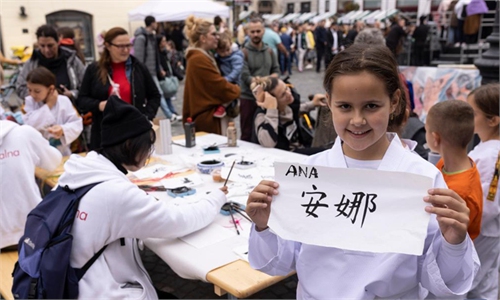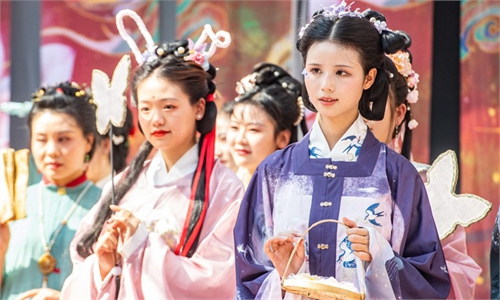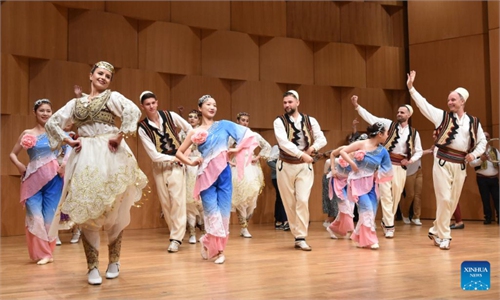ARTS / ART
World heritages should merge with modern life: former curator of the Palace Museum
‘The Shape of Culture’
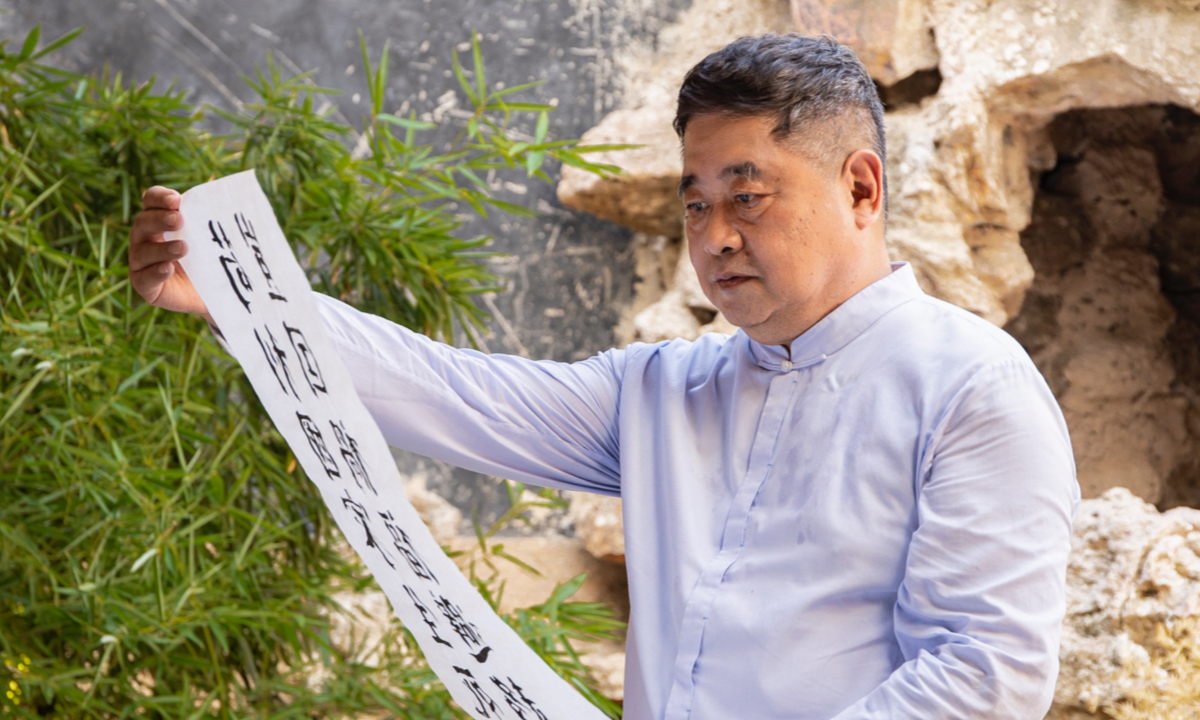
Shan Jixiang examines a work of calligraphy. Photo: Courtesy of the Shape of Culture
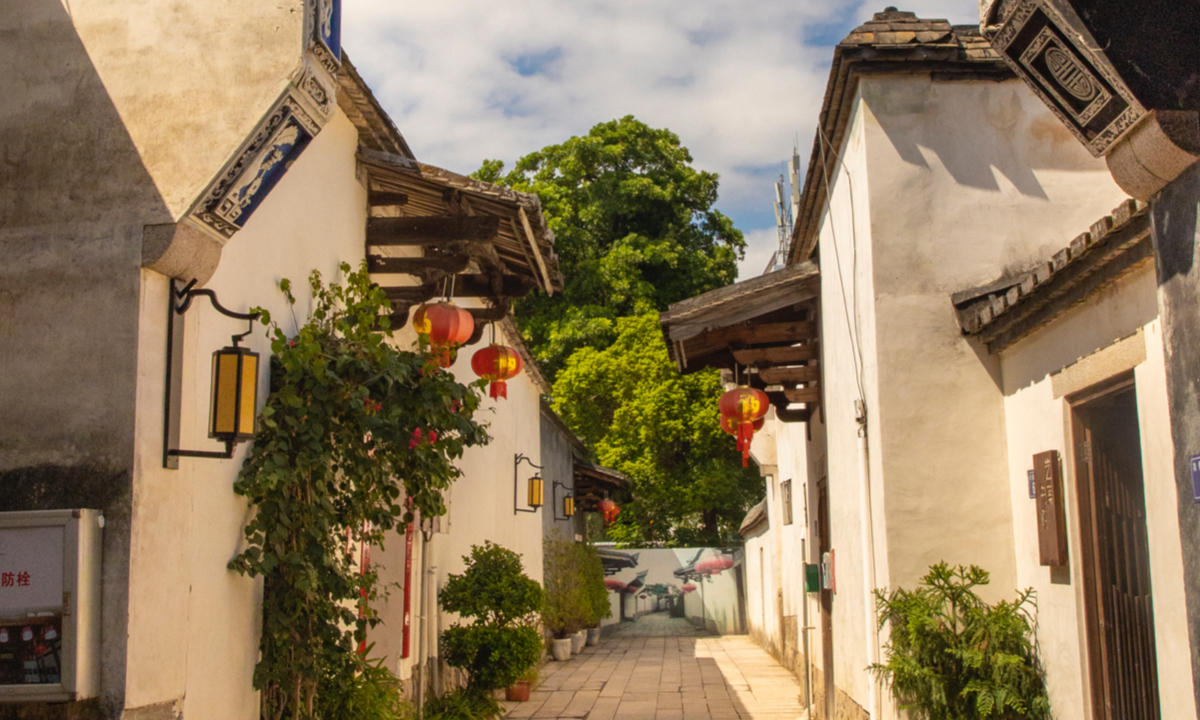
The Sanfang Qixiang in Fuzhou, East China’s Fujian Province Photo: Courtesy of the Shape of Culture
Starting from Sanfang Qixiang (lit: Three Lanes and Seven Alleys), a historic and cultural area in Fuzhou, East China's Fujian Province, Shan Jixiang, former curator of the Palace Museum and now head of the China Cultural Relics Academy, set out on a journey to explore World Heritage sites around China for a third consecutive year in the TV program The Shape of Culture.Over the three seasons of the show, Shan has visited a diverse range of heritage sites such as the Great Wall, China's porcelain capital, Jingdezhen and the ancient city of Yangzhou along the Great Canal. The latest 12-episode season began to meet with audiences on Sunday.
During the process of getting close to ancient treasures and talking with inheritors as well as the guardians of these heritage sites, the former "gatekeeper" of the Palace Museum was stunned by the vitality of traditional Chinese culture. He noted that one of the important reasons for preserving World Heritage sites is to have them serve modern society by getting young people interested in history.
"From 2004 to 2019, thanks to its own efforts and international cooperation, China now has 56 World heritage sites like the Historic City of Macao and the Yinxu Ruins in Henan, making it the country with the most World Heritage sites in the world. These practical cases demonstrate Chinese solutions and wisdom for the conservation of World Heritage sites," Shan told the Global Times.
Targeting young audiences
Making cultural relics stored in museums, heritages displayed throughout the vast land and texts written in ancient books come alive is one of the most important missions of Chinese cultural institutes.
Shan and other producers of the program have been thinking about ways to bring the country's ancient heritage closer to young people.
In Sanfang Qixiang, 68-year-old Shan and three younger hosts went deep into local people's lives and experienced the business culture in Fujian that has been passed down for centuries. On the Great Wall in Beijing, they talked with researchers such as Cheng Yongmao, who devoted 18 years of his life to restoring the Great Wall. In the Ruins Site of the Longquan Kilns in East China's Zhejiang Province, they learned how to make porcelain and witnessed how the ancient art form still supports local village development and the tourism industry.
The show's virtual ambassador is Wen Qingqing. The digital hostess was inspired by the image of the Qingniao (lit: blue bird) recorded in traditional Chinese fairy tales, which is seen as a messenger of good luck. An attempt to attract young viewers, she combines classic oriental beauty with contemporary aesthetic trends.
"We are working in various ways to showcase the unique charm of Chinese culture. Bringing cultural relics to life is part of heritage conservation today. We no longer believe that the best way to preserve something is to lock it away in a storeroom. Cultural relics are the creation of society and people, so they should show their charm in people's real lives again," Shan said.
He added that protection of world heritage should not be limited and should be adapted to the times and reflected in life. Traditional houses, industrial heritages sites and intangible heritages such as folk customs and traditional skills are becoming important parts of world heritage conservation. Additionally, heritage protection has a closer relationship with urban and rural construction and development.
Other Chinese cultural experts including Chen Lüsheng, former deputy of the National Museum of China, have also seen traditional culture and heritages in China becoming younger and more alive. He has praised the creativity of Chinese cultural workers, noting that innovation should be based on the uniqueness of each cultural relic.
Chinese experience
"China is changing from a country that possesses the most cultural heritages to a strong country with better capabilities to protect cultural heritages. Today, we use 'cultural heritage conservation' instead of 'cultural relic protection,' which is not a simple word change but a reflection of the inheritance and development of the conservation system," Shan noted.
He pointed out that China is exploring better ways to preserve its heritage and is researching methods such as encouraging the public to actively join in heritage protection and that the experience the country has gained in the field can also be shared with other regions around the world.
Among the many heritage sites Shan has visited in the show, the Archaeological Ruins of Liangzhu City impressed him the most, he told the Global Times. Shan also took part in the renovation of the site.
"When we started to renovate the site, it was filled with a mess of waste recycling stations, printing houses, farmland, water towers surrounded by hills and quarries. But today, it has become a national archaeological site park with rice fields and water gates, showing the unique cultural landscape of China over the past 5,000 years. And 70 to 80 percent of the visitors are young people," Shan said.
This is one of the practical cases of heritage conservation China can share with the world.
At the 44th World Heritage Conference in 2021, the Great Wall was named as a model case of world heritage protection and management, providing a Chinese example for the world to learn from.
Shan said that in the future, there will be more model cases like Liangzhu City and the Great Wall appearing in China with the firm support of government's policy.

